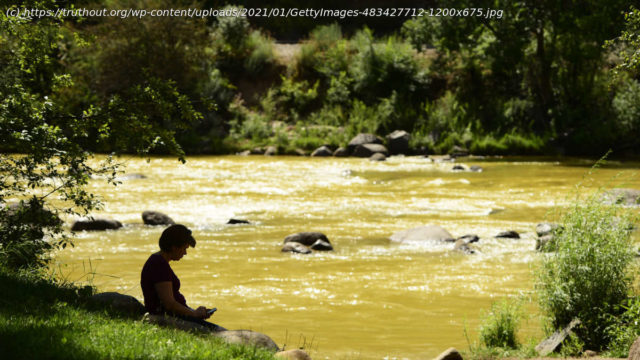Satellite imagery found long-term „significant color shifts“ in U.S. waterways over more than 3 decades.
A new study reveals that roughly one out of three large American rivers have appeared to change color since 1984, with many of the bodies of water seeming to slowly turn yellow and green — and scientists tell Salon that this could mean some very bad things for human health. Analyzing approximately 15.9 million satellite images taken over a period of more than three decades, researchers at the University of North Carolina at Chapel Hill, the University of Pittsburgh and Colorado State University discovered that of the more than 108,000 kilometers (roughly 67,000 miles) of rivers at least 60 meters (197 feet) wide studied throughout the country,56% appeared predominantly yellow and 38% appeared predominantly green. While rivers often change color based on the seasons and flow regimes, the scientists found that one-third of rivers had experienced long-term “significant color shifts” between 1984 and 2018. (If you want to see what has happened with your local river, there is a handy interactive map here.) “One thing to remember is that rivers are not necessarily turning ‘yellow’ or turning ‘green,’” Dr. John Gardner, a co-author of the study (which was published earlier this month in the scientific journal Geophysical Research Letters), wrote to Salon. “If you recall to visible light spectrum R-O-Y-G-B-I-V (red, orange, yellow, green, blue, violet), a significant ‘red-shifted’ trend simply means that there is a trend towards the red yellow end of the spectrum, which could mean a river is changing from green-blue to green. Similarly, a ‘blue-shifted’ trend means a river is trending towards the blue/green end of the spectrum, which could mean a river is changing from yellow-orange to yellow, or green-yellow to green.” As Gardner pointed out, there are a number of things that can cause these seeming color shifts. When a river appears yellow, the likely culprit is suspended sediment; when it appears to green, the probable cause is algae; and if a river is blue… well, as the cliché goes, the chances are that means you’re dealing with “relatively clear waters.” The end result is that “if a river changed from green to yellow, that would likely be caused by some combination of less algae and more suspended sediment. Potential drivers of such changes are numerous, spanning changes to the river channel itself to how entire landscapes are managed.” Gardner observed that increased construction due to urbanization, increasing river flows and agriculture can increase suspended sediment and make a river appear more yellow, while a decrease in nutrients and light can reduce algae and make a river appear less green.






